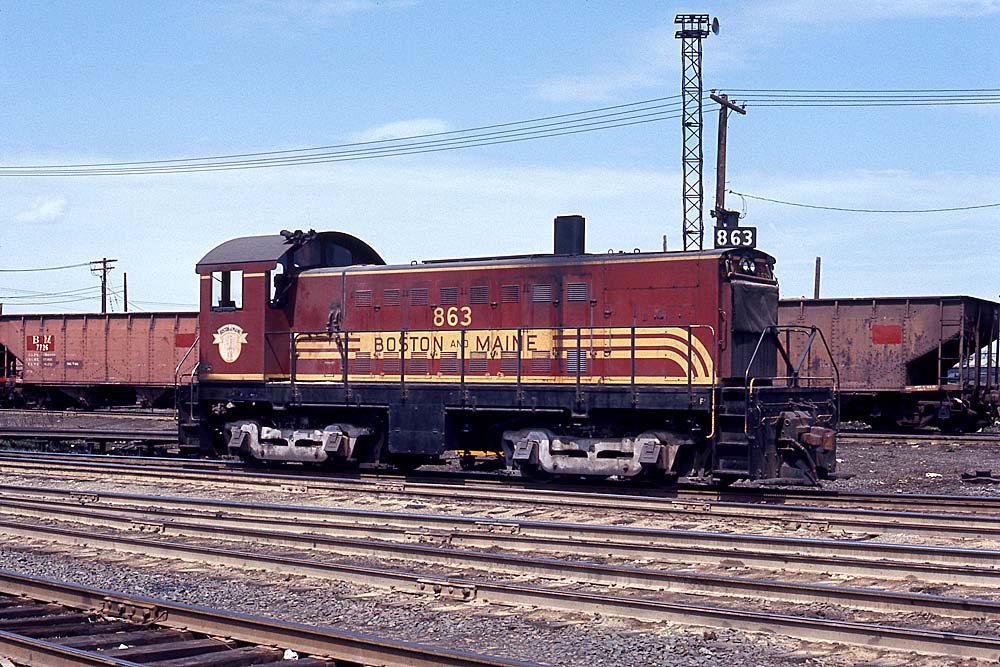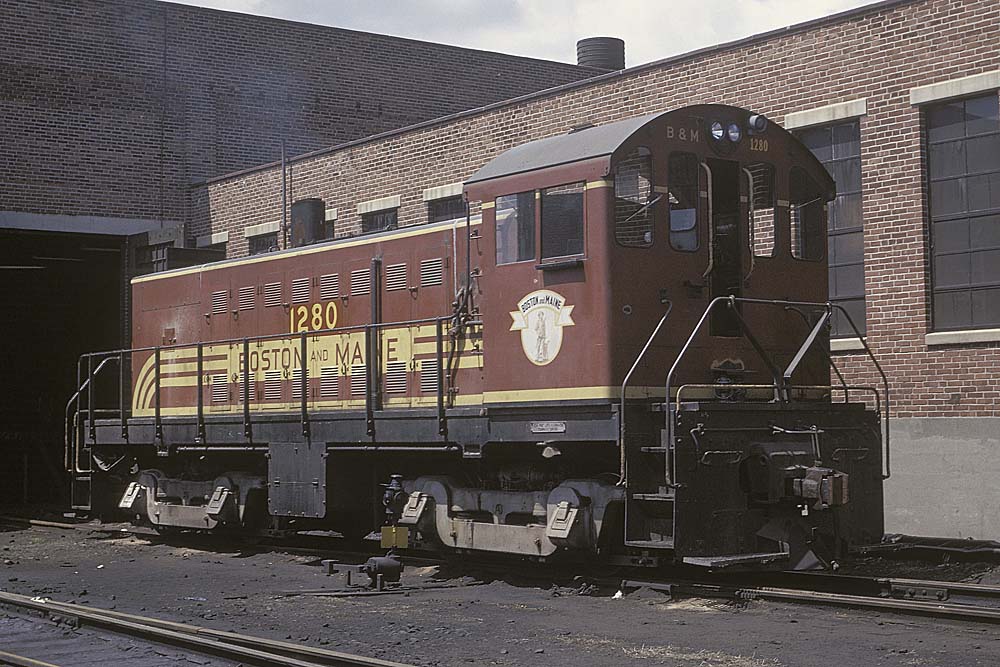Similar to the EMD RS1325, the Alco S5 locomotive is one of those locomotive designs that seemed like a good idea at the time, was engineered well, ran well, but almost no one wanted to purchase.

The manufacturer needed to update its aging lineup of 660-hp S3 and 1,000-hp S4 end cab switchers that had been in the catalog for several years; they were themselves updates of earlier models S1 and S3 dating back to the early 1940s. Powered by the almost indestructible 539 engine, all four models sold well, and solidified Alco’s reputation as a reliable locomotive builder.
But there was a problem. The updated engine that Alco had pinned its hopes on, the 244, was already having reliability problems powering the passenger and freight units it was installed in. Unfortunately, they were not as dependable as the competition and warranty repairs were eating into profits. The builder was hesitant to install it into their successful line of switchers.
So, Alco embarked on the 251 engine, which turned out to be a vast improvement over the 244. But, leery of unleashing another comparatively unreliable diesel on the market, the builder conducted a lengthy in-house testing period before being satisfied the design would be an asset rather than a liability.
Thus, in 1954 was released the S5, an 800 hp, end-cab design that incorporated the six-cylinder 251A engine. There were myriad internal improvements, but the most notable external difference from previous units was the radiator placed in the nose rather than on the flanks of the unit. Alco built a demonstrator and promptly picked up an order for six for Boston & Maine. Almost as quickly as it was introduced, engineers made a few more improvements, redesignated it the 251B, upped the horsepower to 900 and created the almost identical S6. Almost 100 of the latter soon plied the rails, leaving the S5 a minor player in locomotive history.

The demonstrator was eventually sold to an industrial operation, which in turned sold it to another industrial. Four of the six on the B&M eventually had their prime movers swapped out with 251Bs, upgrading them to 1,000 hp. All accorded themselves well, remaining on the roster until the 1970s when they were set aside for scrapping.
But one, No. 864, managed to escape. After a stint as an industrial switcher, it resides at the Mad River & NKP Railroad Museumin Bellevue, Ohio.














While it is entirely possible that the B&M’s second order went to another road or roads, there’s no way to find out without knowing what their serial numbers may have been. There are other roads that had the louvered bodies as well, other than WM. I would say the closest we can get is to see what other railroad(s) received S-5 units in August 1955.
Back in the early 1960’s I was the New England Area Rep for Esso (Humble Oil) Touring Services. I ran across one of the S5’s switching the yard at Bellows Falls, Vt. (a ‘backwater’ even back then). I spent a pleasant lunch hour shooting the breeze with its 3-man crew and came away “gifted” with an ‘official’ B&M trainman lantern retrieved from its location under the cab step – I still have it to this day. Sadly, I can’t remember its hood number and, having changed jobs and homes several times since those days, I can no longer find any of the pics I took back then. Alas!
I’m sorry, the previous comment had the wrong Dropbox link to the Alco letter. Corrected here:
https://www.dropbox.com/s/acn7itk4gcccvra/bmALCO%20S-5%20Letter%20from%20ALCO20180708_01.pdf?dl=0
I have quite a bit to say with regard to the S-5’s of the Boston & Maine. First, the B&M was indeed happy with the S-5 and was willing to work with Alco (I get the impression that B&M was their field-testing partner here) and was happy with them enough to order FOUR ADDITIONAL S-5’s #’s 866-869. This order was confirmed by Alco in a letter dated August 27, 1954. You can download it here:
https://www.dropbox.com/s/wn32vj7rdhr4lu0/B%26M_1954_Diesel_Class.pdf?dl=0
It’s five pages and covers all the details but…. The B&M cancelled the order. Why this is, is a matter of speculation. However, I believe it had a great deal to do with the change in management at the B&M and the sudden turn toward RDC cars to replace the vast majority of their locomotive hauled passenger services. All of a sudden, all of the EMD GP-7’s and Alco RS-2’s and RS-3’s were going to be looking for new jobs. Ergo, what would they need with more switchers.
The second item of note is Alco production itself. Alco turned to the 251 to replace the 539 in switchers. However, this begs the question as to why Alco continued to build 539 powered RS-1 roadswitchers when it was completely logical to also replace the 539 in the RS-1 with a 251, especially when they could be boosted to 1000HP. This defies explanation in my book.
Any idea how far along that second order got before being cancelled?
The Western Maryland received two S6’s in 1956, but their external body style (door and louver configuration) is a match for the B&M S5’s as opposed to the stylings of most S6’s. The difference must have just been under the hood. It would be interesting to find out if the hoods for the B&M engines were already being built when the order was cancelled.